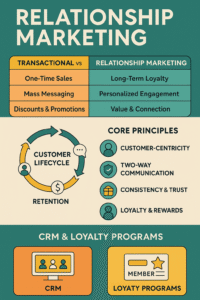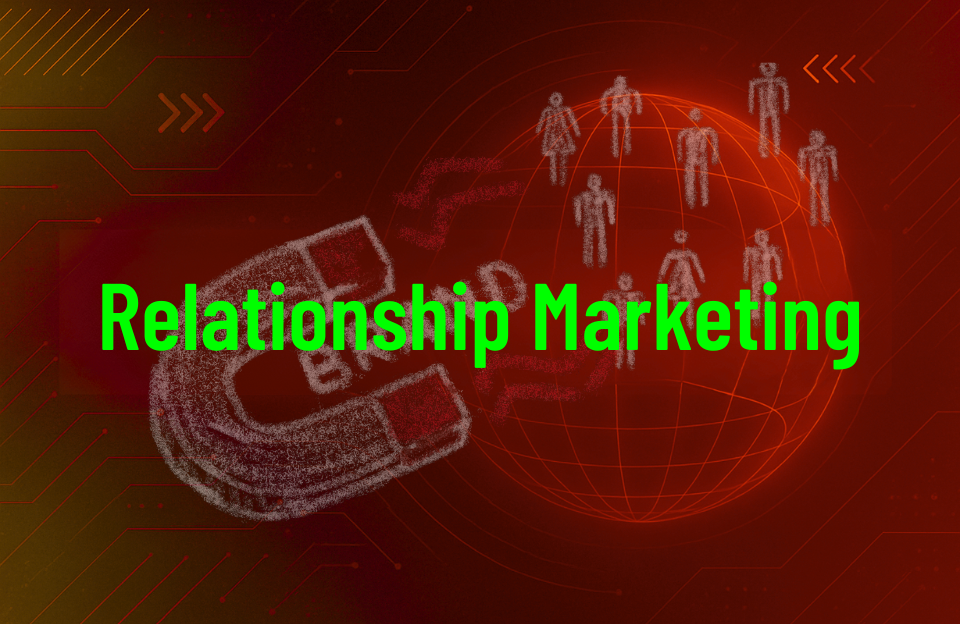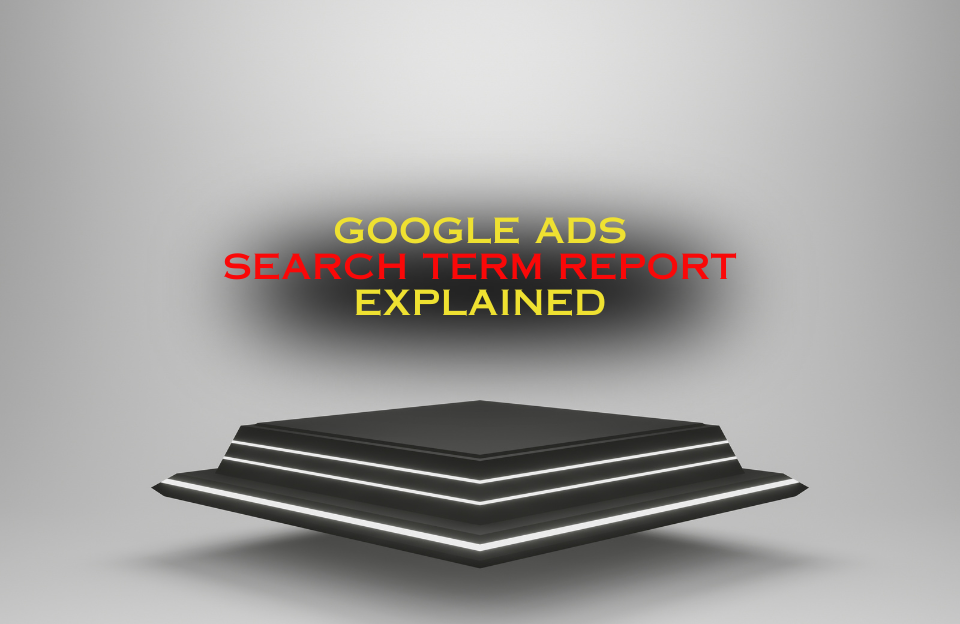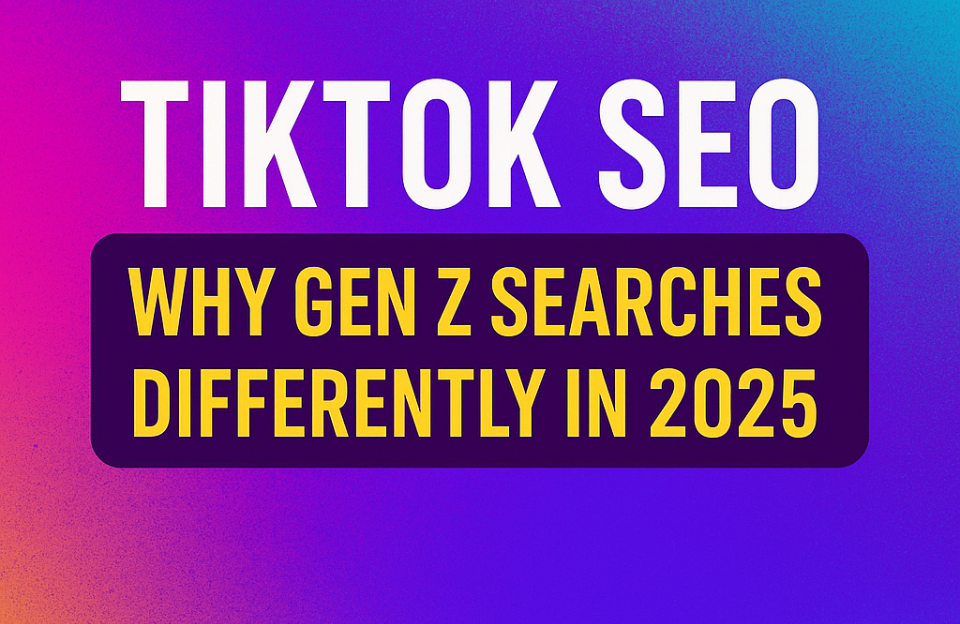In today’s hyper-competitive digital landscape, customer acquisition is no longer enough. Brands that thrive aren’t just chasing clicks or conversions, they’re building relationships. Welcome to relationship marketing: a long-term strategy focused on fostering loyalty, trust, and emotional connection between brands and their customers.
But what exactly is relationship marketing? Why does it matter? And how can businesses implement it effectively? This complete guide breaks it down with principles, strategies, benefits, and real-world examples.
1. What Is Relationship Marketing?
Relationship marketing is a marketing strategy focused on developing strong, ongoing connections with customers to encourage repeat business and long-term loyalty. Unlike transactional marketing, which emphasizes one-time sales, relationship marketing seeks to nurture customer satisfaction over time.
It’s built on the idea that customers who feel valued and understood are more likely to stay loyal, spend more, and become brand advocates.
- Long-term orientation
- Personalized communication
- Two-way engagement
- Focus on Customer Lifetime Value (CLV)
- Strong use of data and CRM systems

2. Core Principles of Relationship Marketing
Customer-Centricity
Put the customer first. Every product improvement, message, or support process should revolve around customer needs and feedback.
Two-Way Communication
Successful relationship marketing isn’t just about broadcasting; it’s about listening. Customers should feel heard, not just targeted.
Consistency & Trust
Every interaction with a brand, whether online, in-store, or via email, should reinforce trust. Brands that consistently deliver on their promises build long-term equity.
Loyalty & Rewards
Loyalty programs, referral bonuses, and exclusive offers create emotional investment and incentivize ongoing engagement.
Personalization
Modern tools allow brands to tailor their content, offers, and services. The more personalized the experience, the more valued the customer feels.
3. Key Strategies in Relationship Marketing
Email Marketing & Segmentation
Segmented email campaigns enable brands to send relevant, timely messages based on behavior, preferences, or purchase history. Think: welcome emails, birthday offers, and personalized product recommendations.
CRM Systems
A CRM (Customer Relationship Management) platform centralizes customer data, enabling personalized follow-ups, retention workflows, and service automation.
Loyalty Programs
Reward repeat customers with points, discounts, exclusive access, or status tiers. The goal is to make loyalty feel meaningful, not just transactional.
Social Media Engagement
Active engagement on platforms like Instagram, LinkedIn, or TikTok helps brands create community. Responding to comments and DMs builds trust and relatability.
Post-Purchase Follow-Ups
A thank you message, product care tips, or satisfaction survey shows customers that you care beyond the sale.
Content Marketing
Offer value through educational blogs, tutorials, behind-the-scenes content, or user-generated stories that resonate with your audience.
Omnichannel Customer Support
Ensure consistent, human-centered support across all channels so customers always feel supported.
4. Benefits of Relationship Marketing
Higher Customer Lifetime Value (CLV)
Loyal customers buy more, stay longer, and cost less to retain than acquiring new ones.
Increased Retention
A small increase in retention can significantly boost profits. Relationship marketing makes this possible.
More Referrals and Word-of-Mouth
Happy customers become brand advocates, sharing their experiences with others and generating organic growth.
Upselling and Cross-Selling Opportunities
When you understand your customers deeply, it’s easier to recommend products they actually want.
Competitive Edge
In a world of algorithm-driven ads and automated funnels, brands that feel human and authentic stand out.
5. Relationship Marketing vs. Transactional Marketing
| Transactional Marketing | Relationship Marketing |
|---|---|
| One-time sales focus | Long-term loyalty focus |
| Mass messaging | Personalized communication |
| Price and discount-driven | Value and connection-driven |
| Little follow-up | Continuous customer interaction |
| Focus on acquisition | Focus on retention and referrals |
6. Real-World Examples of Relationship Marketing
Apple
Apple doesn’t just sell products—it sells experiences. From seamless ecosystem integration to curated events and fan communities, the brand fosters emotional loyalty that goes far beyond tech specs.
Starbucks Rewards
Starbucks’ app-based loyalty program offers points, perks, personalized drinks, and early product access. It encourages repeat purchases and strengthens emotional connection.
Coolblue (Netherlands)
Dutch e-commerce giant Coolblue uses personal communication, humorous copy, and ultra-fast delivery to stand out. Their philosophy of “anything for a smile” creates a loyal customer base that trusts and loves the brand.
7. Relationship Marketing in the Digital Age
Marketing Automation
Tools like HubSpot or Klaviyo allow brands to create dynamic customer journeys while personalizing at scale.
AI and Predictive Analytics
AI can anticipate customer needs based on behavior, helping brands send the right message at the right time.
First-Party Data
With third-party cookies fading, owning customer data like emails, purchase history, and preferences becomes more important than ever.
Social CRM
Integrated tools that connect social media engagement with CRM platforms allow brands to track and optimize conversations in real time.
8. Common Mistakes to Avoid
- Over-automation that removes the human element
- Ignoring feedback or failing to respond to complaints
- Inconsistent messaging across platforms
- Using loyalty programs purely for discounts without added value
9. Brand Spotlight: Patagonia
Patagonia doesn’t just sell outdoor gear—it stands for environmental activism. From its repair programs to its “Don’t Buy This Jacket” campaign, Patagonia has built a loyal customer base who support the brand’s values. This emotional alignment fosters long-term engagement and advocacy.
Conclusion
Relationship marketing isn’t about closing the sale, it’s about opening the relationship. In an era where algorithms dominate and attention spans shrink, the brands that win are those that truly connect.
By focusing on trust, value, and customer experience, businesses can transform casual buyers into lifelong fans. And while relationship marketing takes time, the payoff in loyalty, advocacy, and sustainable growth is worth every effort.
If your business is still stuck chasing clicks, maybe it’s time to start building connections.




